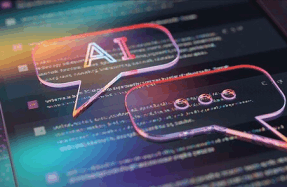The iPhone at 15

Apple’s iPhone is a product that’s been years in the making. Apple’s designers have been working on it for years, and the web has been buzzing about Apple’s entry into the phone market for just as long – or maybe even longer. But now, after six months of intense speculation since its introduction at Macworld Expo, the iPhone has arrived. Although the iPhone is not without a few quirks, it makes good on the hype that surrounded it.
HEFTING THE HARDWARE
Steve Jobs proudly described the iPod as a beautiful piece of hardware that had amazing software inside it. And with the iPhone, Apple’s hardware designers have once again wrapped the output of the company’s in-house developers into a remarkable piece of hardware. Pictures of the iPhone don’t do it justice: it’s smaller than it looks. Roughly the width (61mm) and height (115mm) of a full-size iPod, depth is the dimension that makes the iPhone feel tiny: it’s shockingly thin, measuring 11.6mm.
However, the iPhone doesn’t feel fragile. It’s got enough weight (135g) to it to feel substantial when it’s in the palm of your hand. And the iPhone appears to be built to last, with a screen that proved quite resistant to scratches and drops. The iPhone’s back side is a textured silver, rather than the polished stainless steel of the full-sized iPod models, so my guess is that both the front and back of the iPhone will be more resistant to scratches than either the full-sized iPod or the original iPod nano.
This is not to say that the iPhone is impervious to being marked up. Perhaps we were unwise to order pizza on the day of the iPhone’s arrival, but the grease from that pizza helped make a point: the iPhone’s screen collects fingerprints. The good news is, the screen’s so bright that in most situations you don’t notice the fingerprints. But it’s enough of an issue that Apple includes a small black chamois cloth in the iPhone box, and the image-conscious iPhone owner will want to give their screen a good wipe-down often.

The dominant physical feature of the iPhone is its black glass face, punctuated by a single physical button on the bottom and a speaker slit near the top for listening to phone calls. But the Home button isn’t the only physical button to be found anywhere on the iPhone; on its side are a pair of volume buttons, which (depending on context) will let you raise or lower the volume of the phone’s ringer, music or video playback, or conference-call speakerphone. Placed right above these two buttons is a switch that slides back and forth; in one position the iPhone will emit sound from its external speaker, while in the other it will only vibrate to warn you that something’s going on.
Using a switch instead of a toggle button was an excellent choice, since you can feel the switch’s position even in a darkened cinema. However, the volume buttons are located a bit too close to the switch, and on several occasions I found myself pushing the switch (which won’t budge) in a vain attempt to boost the iPhone’s volume.
The iPhone’s top has a physical button, too. It serves as a wake/sleep toggle button: press it and the iPhone goes to sleep and locks instantaneously. (This feature is aimed at preventing you from accidentally pushing an on-screen button; you can still receive incoming calls when the phone’s in this state.) Press that same button and hold for a few seconds, and the iPhone will shut down completely.
Opposite the wake/sleep toggle on the iPhone’s top edge is a recessed headphone jack. It’s
You’re reading a preview, subscribe to read more.
Start your free 30 days





